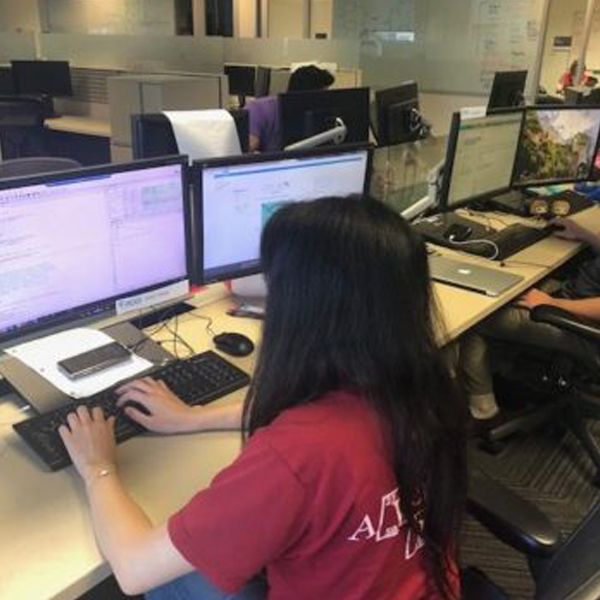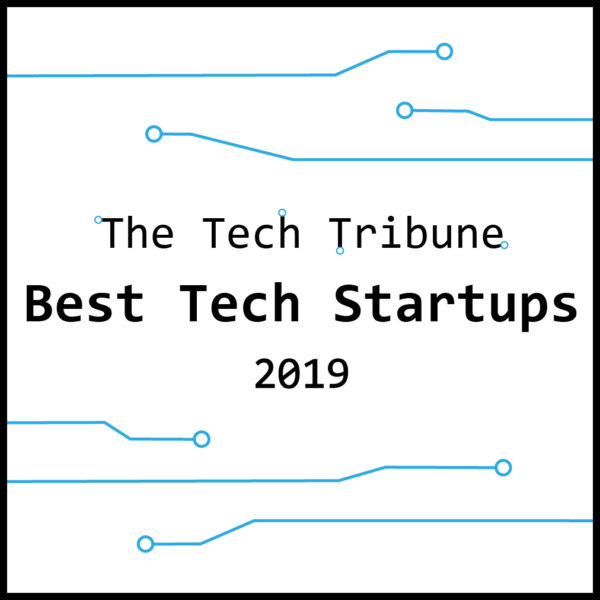Over three years, effort leads to 31 percent drop in ED visits and 42 percent drop in admissions for pediatric asthma cohort
My Summer as a Data Science Intern at PCCI
For the short duration of returning to my hometown Dallas for the summer, I’ve been interning at Parkland Center for Clinical Innovation (PCCI) as a Data Science Intern. During my interview with Albert and Vikas, we discussed some issues with the representation of data in the current healthcare system. Hospitals use different coding systems in their electronic medical records (EMRs), making communication between hospitals and care providers difficult. A while ago, a new health data standard called FHIR (Fast Healthcare Interoperability Resource, pronounced “fire”) was proposed. My project this summer aimed at identifying whether data could be easily transformed into the new FHIR format, carrying out the transformation, and creating predictive models using the new FHIR data.
Situated on the 11th floor of the building, PCCI is a very chill place to work. Quiet spaces are easily found at desks and conference rooms scattered around the office. As an intern, I sit on the “Intern Island” with (usually) 6 other interns. I like this space because we get two monitors and a Lenovo Thinkpad.

As for work, each PCCI project usually consists of one project manager, a clinical expert, and a data scientist. The intern projects are no different; Aaron was the FHIR Project Manager Intern, and Mila was the FHIR Clinical Intern. Both had important but separate duties that helped our project succeed.
As the Data Science Intern on the FHIR project, I was responsible for first converting the data into FHIR resources. This involved bringing back Java knowledge from several years ago! There were definitely some issues figuring out how to add the right dependencies because Java can get complicated very quickly. A few days were spent just trying to get oriented with Java and Eclipse, and making sure all the necessary packages for FHIR were installed.
We were working with two years of data. This roughly translates into 27 million (!) vitals and 17 million labs, and each vital and lab was converted into its own separate file. I quickly realized that there would be no space on my laptop to hold all of these files, so we decided to enlist the help of Microsoft Azure. With Azure, the task became less difficult, but still, the hardest part of my summer was working with such huge numbers of files.
Caught up in the huge task of transforming vast amounts of data to FHIR resources, I left very little time in my internship to work on actual data science. Out of the approximately 13 weeks total, about six weeks were spent converting the table format EMR data into FHIR resources, five weeks were spent on parsing the FHIR resources into a format for machine learning, and the remaining two weeks were dedicated to model building. Reflecting back, I would definitely work harder to cut short the resource conversion in favor of more time for data science.

As a Data Science Intern at PCCI, you have the freedom to work in any language you want; the full-time Data Science team is very evenly divided between R and Python. There’s also a lot of freedom in dictating which path your project will go. Your supervisor will point you in a very general direction of where to go and state goals and expectations, but is otherwise very lenient!
Don’t be shy about asking around people for advice and help, even if they’re not on your project team! Even though most people are busy with various meetings, they will gladly schedule a 30-minute or even hour-long block to discuss your project privately with you.
When presenting your project, whether it’s a progress update or final presentation, expect multiple questions from the audience. It’s not that they want to quiz you on your knowledge and preparation on your project, but because they’re genuinely curious and care about understanding what you’re doing over the summer.
A mandatory 30-minute lunch is required every day. I recommended bringing lunches that can stay in the fridge for several days (like salad) or not bringing anything because there are often team lunches and random outings during the day. Occasionally there’s leftover pizza or sandwiches from lunch meetings in the big conference room or leftover burritos from breakfast.
I enjoy the diverse atmosphere at PCCI the most. The three teams: Data Science, Project Management, and Clinical teams collaborate and work together so well. It’s a very fluid system. A data scientist with a question about the best intervention methods for patients with diabetes can easily walk over to a clinical team member and get an answer within minutes. Despite being employed as a data scientist, you have access to an entire host of medical knowledge from the clinical team and connections from the project management team.
My biggest takeaway from this internship is learning about long-term time management and collaboration. Manage your time well and you’ll be able to at least touch on everything you wanted to learn during your internship. Collaborate with as many people as you can, so not only can you learn so much more but also gain friends and connections while doing so.
The Tech Tribune: 2019 10 Best Tech Startups in Dallas
The Tech Tribune staff has compiled the very best tech startups in Dallas, Texas. In doing our research, we considered several factors including but not limited to:
- Revenue potential
- Leadership team
- Brand/product traction
- Competitive landscape
Additionally, all companies must be independent (un-acquired), privately owned, at most 10 years old, and have received at least one round of funding in order to qualify.
8 Takeaways from the West Coast Payer and Provider Summit Addressing NMDOH for Complex Populations
While the importance of addressing Non Medical Drivers of Health (NMDOH) is now a common theme in reputable conferences, learnings are growing richer and more intense. In June, The West Coast Payer and Provider Summit to Address Non Medical Drivers of Health for Complex Populations was an industry gem hosted in Scottsdale, AZ. Here is a recap of what I felt were some of the biggest takeaways from the summit.
1. Purpose Driven Change-Leadership Workshop by David Shore, PhD, Harvard
Throughout the summit weekend, many workshops were presented by thought-leaders in the space. David Shore’s workshop was a veritable delight of new twists on old themes to jog the mind and start a new race for transformative change within one’s sphere of control. Some key points included:
- Spending extra time shaping questions to ask increases the efficiency at arriving at solutions
- Project life cycles should be front-end loaded with interrogations of reality and refuting assumptions
- Conduct a sequence of smaller projects that feed into a cohesive program instead of long drawn out projects
- It’s only innovation if you effectively solve meaningful problems, which you can scale and spread
- Sustain with the “Science of Spread” methodology
- According to research, the optimal size of a project team is seven to eight people – if it takes more than two pizzas to feed your team lunch, you have too many people!
- Many interesting points of view of healthcare providers regarding NMDOH
- While 40-50% see their important influence on outcomes, 70-90 % don’t necessarily think it’s their job to respond to those needs.
- A personal favorite: go beyond lessons learned to lessons leveraged!
2. Extensions of the Triple Aim Statement Reframing the Importance of NMDOH
First, we had the Triple Aim, then quadruple and now… the quintuple aim:
- Cost
- Quality
- Patient Experience
- Provider experience
- EquityNMDOH
As this Triple Aim Statement continues to expand, what do you envision to be the sixth?
3. Social and Healthcare Platforms
Early stage entrants working on cloud platforms to connect care, patient created and social data are seeing encouraging early gains. Below are some notable platforms to keep an eye out for:
The Real-World Education Detection and Intervention (REDI) Platform:
- Currently deploying in border towns along southwest Texas by UT Austin Lynda Chin, MD’s team in collaboration with PWC (pro bono), AWS, and Walmart
- They report a 1.7% decrease in Hgb A1 c of diabetics in an integrated data sharing program with remote monitoring
ORCHWA Platform:
- An Oregon 1115 Waiver project is driving to get large numbers of community health workers across the state to document on and create closed-loop referral
- They focused more on the human aspects of this and it seems that they may still be in technology development
4. Powerful Visualizations for Action
This was a “blow you away presentation” with some truly powerfully meaningful novel approaches driven by Jason Cunningham, MD, CMO of West County Health Centers. Below are suggested steps one can take to innovate the virtual world of healthcare:
- Use a mix of vendors to include Tableu, Unifi + KUMO + Argis
- Create visualizations for actions. For example, zip code areas affected by wildfires were targeted and cross referenced with their patient list allowing the ability pinpoint their patients for proactive outreach
- Allow for early identification and replacement of lost belongings including medications, medical supplies, and strong patient experience feedback approval
5. Early findings and Interesting Metrics to Prove the Value of NMDOH Intervention
While the consensus opinion and extensive research clearly indicate the magnitude and causal nature of NMDOH’s influence on health outcomes, quality, and cost, most interventions depend on unique funding streams. This is because ROI hasn’t been proven to hit mainstream reimbursement. Examples include:
- WellCare Insurance Plan reported a decrease of $2,400 per year per member for those who received social needs interventions versus those who did not
- Sutter Health used a Health Equity Index to target risk populations affected by disparities and used the index to prove intervention effects
- Kaiser Permanente created a patient “feelings of hope” scale
- Special Needs Plans (SNP) used a “Loneliness scale,” which contributed to disease progression and longevity to target and monitor at-risk individuals
Return on investment is largely focused on health outcomes, but how can we measure the social outcomes of Social ROI?
6. Speeding Up Patient Transport
Getting patients where they need to go, when they need to go is a top priority that has an impact on not only outcomes but patient experience in terms of ease and convenience. Just think about your own stress when your car is in the shop, stress can agitate any clinical state. Interesting approaches to speeding up patient transport include:
- Ordering patient transport through referrals in their EHR
- Superimposing public transport routes onto patient location density and using the information to advocate for new routes
7. New Term – “Patient Disengagement”
Patient engagement often is a “catch-all” bundled term. But new ways of disentangling the terms unlocks possibilities, such as:
- Disengagement Vulnerabilities- a method of enumerating characteristics of individuals and their circumstances that can interfere with engagement to target and develop personal connectedness
- Tangible incentives are used to increase participation and encourage healthy choices
8. Payer Pressing Mobile Engagement for the Homeless Who Are “Not Ready to be Housed”
“Housing first” advocates began changing the landscape and the dialogue on the all-too-common reality of homelessness. One size doesn’t fit all in this multidimensional problem. A notable example is the homeless and housing resource team created by ANTHEM Indiana Medicaid. If patients aren’t ready to be confined by walls, the program provides a cell phone and a mobile app to engage them with online tools.
Learn more about PCCI’s collaborations, or stay up-to-date with our recent news by following us on Facebook, Twitter and LinkedIn!
DISD Students Share Mobile App “Klinik” with PCCI
Students Recognized for Innovation
Recently, PCCI had the opportunity to welcome students from two Dallas ISD schools– Townview Science and Engineering Magnet and Emmett J. Conrad High School. This group of students are finalists in the Lenovo MIT App Developer Competition and have been invited to Washington D.C where they will be recognized in an awards ceremony for their innovative app aimed at addressing social and health needs in their communities.
A Different Type of App
Nine Dallas ISD students were given the opportunity to design an app for a competition. While most kids would opt for creating a gaming app or the next social media hit, these students took a different approach. Two-thirds of their classmates come from economically disadvantaged families, and many of their friends, neighbors, and family members have little access to food or healthcare resources. Deeply rooted in their passion for helping their community, they decided to develop “Klinik” an app that could enable them to address these immediate needs.
What is Klinik?
“Klinik” is a mobile app that provides users with crucial information on how to get access to basic resources such as food, healthcare, and shelter. The team of prepared and articulate students shared their project with PCCI innovators, spurring conversation around various aspects of app development. By brainstorming effectively, canvassing their communities to create a database of resources, and having potential users provide feedback on the design during development, these students were able to create an app with a sophisticated design and scope mirroring methods seen in well-established companies.
Learning how to compile accurate community resource inventories that enable those who need them according to their preferences is an active area of research in the field and a strong focus for PCCI. The students having developed the basic app are assessing how it can be scaled for broader use across geographies.
PCCI Strategizes with DISD Students
PCCI will strategize with DISD Academy programs and NAF Future Read Lab to create opportunities for collaboration and learning during innovation cycles and to extend the applicability of initiatives. We think that these students and their peers have the potential to work closely with PCCI through worksite tours, internships and a variety of other NAF sponsored activities.
Their work was sponsored by the Lenovo App Inventor program. Lenovo Scholars provides STEM education through NAF academies in the U.S. in partnership with the Massachusetts Institute of Technology (MIT) to enable the next generation of app developers.
Learn more about PCCI’s collaborations, or stay-up-to-date with our recent news by following us on Facebook, Twitter and LinkedIn!





